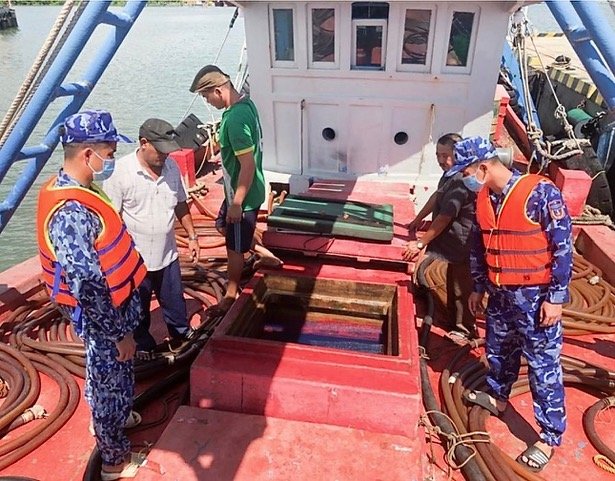South-east Asia: Illegal fuel sales remain a concern
11 July 2022
While crime syndicates in south-east Asia have shifted much of their illegal fuel trading activities to land, recent incidents indicate renewed activity at sea. Although the criminal syndicates are known to primarily target locally trading small tankers, their activities can expose other vessels to acts of theft and robbery. South-east analyst Thomas Timlen has an update.
By Thomas Timlen, South-east Asia Analyst
From 2007 to 2017 smaller sized regionally trading tankers operating on the waters of south-east Asia faced the threat of hijacking. Unlike hijackings off Somalia and later in the Gulf of Guinea, hijackers in this region were not seeking to hold seafarers for ransom, but rather sought to obtain liquid cargoes that could be resold for profit on the black market.
As a result of enhanced and focused law enforcement both at sea and on land, these incidents came to an end after the hijacking of the 1,979 DWT Thai product tanker MGT 1 in the South China Sea off Malaysia in September 2017. The only subsequent incident that came close to a hijacking took place in June 2018, in which perpetrators on the suspected mothership BRIGHT were arrested after boarding the Mongolian tanker LEE BO, which they apparently did in error as the LEE BO was in ballast at the time.
Common to all the hijacking incidents involving tankers in south-east Asia are factors such as the small size and characteristically regional trades conducted under local management. No large internationally-trading tankers were targeted during this period.
While the threat to internationally trading tankers remains low, there are signs that locally trading smaller tankers could again be targeted. Drivers for a potential resurgence of such activity are the increasing prices of refined products such as diesel as well as restrictions put on the export of cooking oil.
Suspicious circumstances surrounding the disappearance of half of the diesel cargo of the 3,897 DWT Cook Islands tanker OCEAN PRIDE in October 2021 represented an initial cause for concern. The missing cargo reportedly had a value of USD 1.2 million. The tanker was found by the Malaysian Maritime Enforcement Agency abandoned off Johor, Malaysia in the South China Sea. To date, the crew of 12 seafarers remains missing. Whether this incident represents a crew conspiracy or a hijacking has not yet been confirmed.
In early 2022 the 540 DWT Indonesian bunker tanker GRAHA DUA SATU was hijacked off Kendari, Indonesia resulting with her entire cargo being stolen. While the crew was released unharmed, the perpetrators remain at large.
It is likely that criminal syndicates responsible for vessel hijackings in the past have been illegally obtaining liquid product from land-based sources, as illustrated by recent reporting describing operations in Malaysia to collect diesel in tank trucks for loading onto small vessels for illegal sale at sea. Such activity is most often conducted in countries where subsidised fuel is available, as it can be sold at higher prices to buyers that would otherwise rely on non-subsidised fuel supplies.
Law enforcement efforts resulting in arrests of fishing vessel crew illegally transporting diesel in Vietnamese waters, tug crew illegally selling fuel in the Johor Strait, and the aforementioned collection of diesel on land for illegal sale at sea have all taken place this year, and are typical of criminal activity surrounding fuel sales that has been continuous.
For the time being the primary threat to conventional cargo vessels trading in south-east Asia remains the theft of engine spares. This is likely to remain the case for some time. However, if crime syndicates decide to once again take to the seas in pursuit of tankers in order to supply their illegal fuel trading enterprises, there is some potential for a knock-on effect that could lead to increases in thefts and armed robberies involving vessels of all types.
Users of the Risk Intelligence System can obtain regularly updated threat assessments relating to criminal activity in south-east Asia. Subscribers to the Risk Intelligence Monthly Reports can also find related information in the south-east Asia section.
LEARN MORE:
Want 24/7 access to unrivalled intelligence? Get a free trial of the Risk Intelligence System:
Sign up to get a two week unlimited free trial for up to five users, providing access to all incidents, assessment reports and features from vessel or desktop. Get in touch now:

